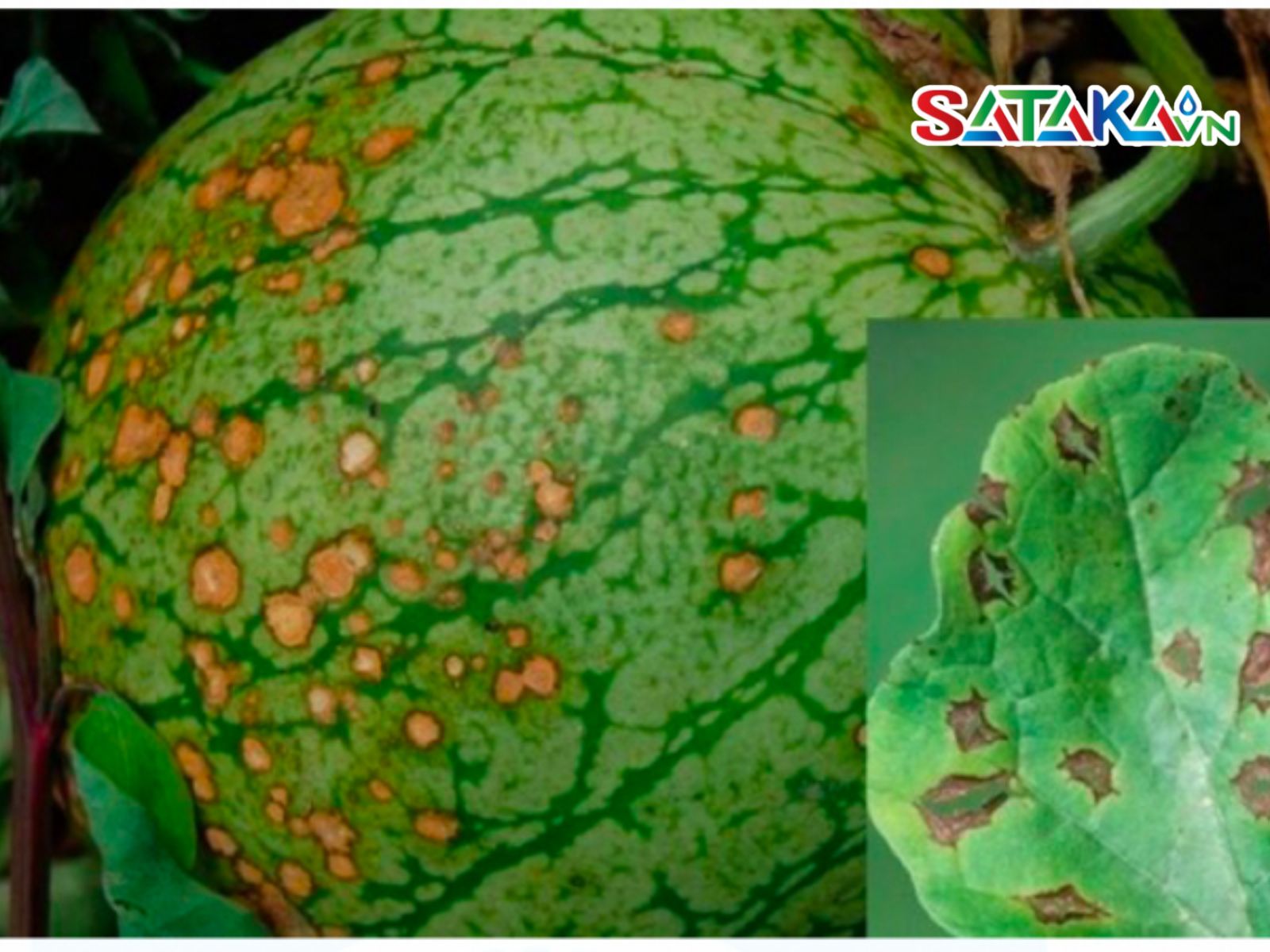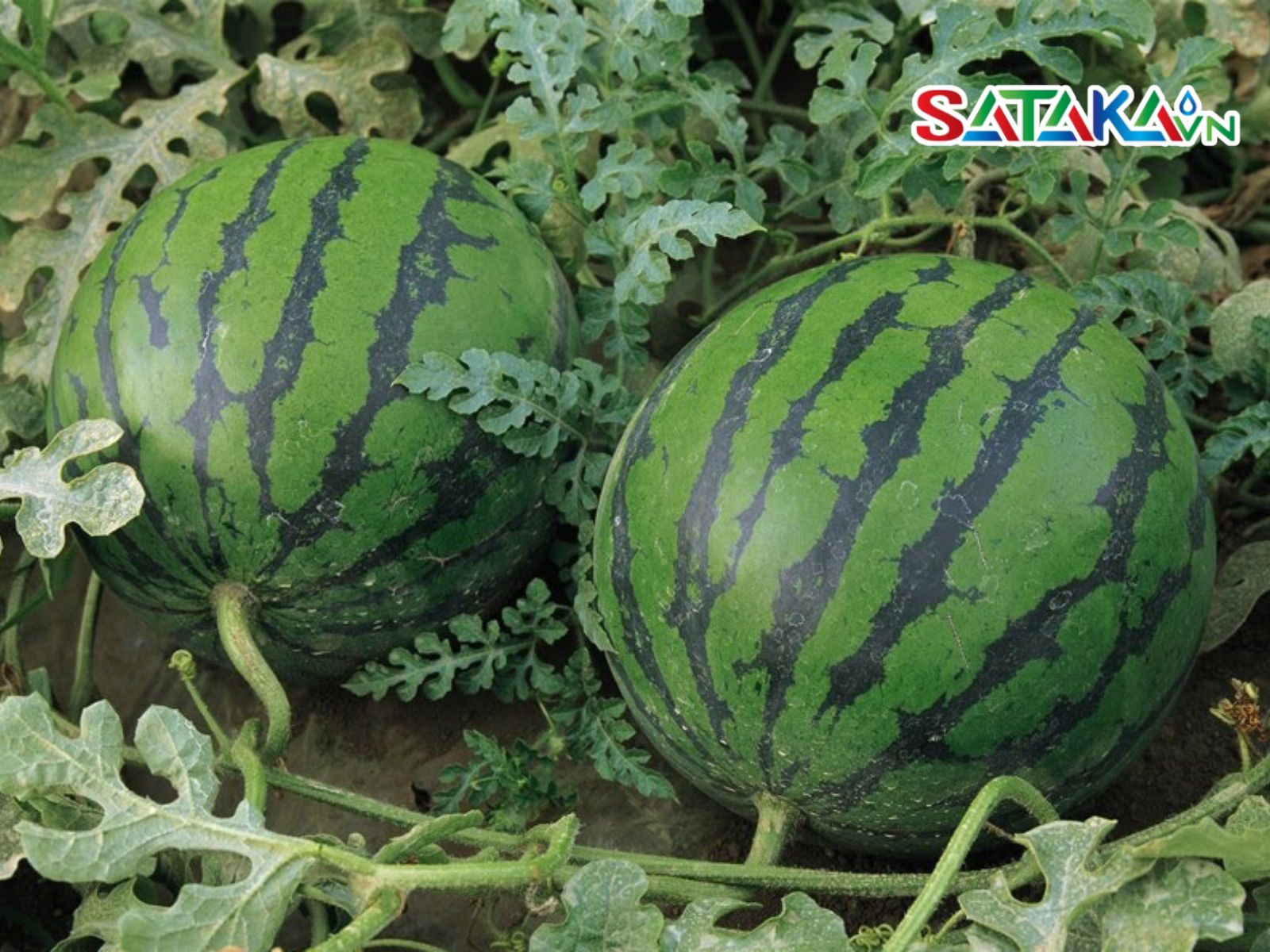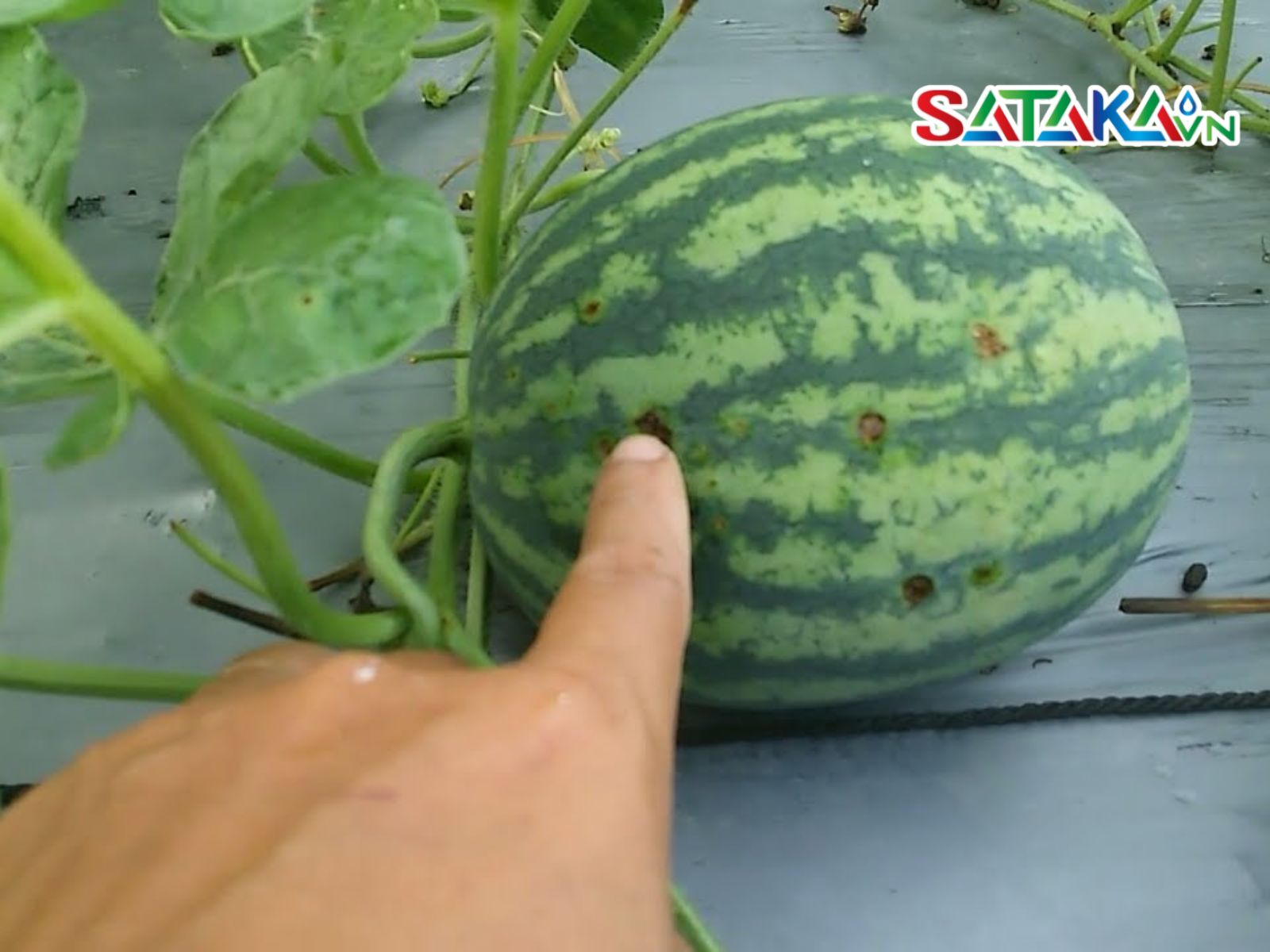Watermelon anthracnose causes wilting leaves, rotting fruit, and reduced yield. Learn the causes and effective control methods to protect your healthy melon crop.
Watermelon anthracnose is one of the most dangerous diseases that melon farmers cannot afford to be complacent about. Caused by a fungus, the disease spreads quickly and seriously affects yield and fruit quality. In this article, Sataka will help you gain a deeper understanding of its causes, symptoms, and effective prevention measures.
1. Causes of Watermelon Anthracnose Disease
Watermelon anthracnose is a major concern for farmers because it can spread very quickly if not properly controlled. The main cause is the fungus Colletotrichum spp., which can persist in the soil, untreated seeds, and diseased plant residues from the previous season.
Specifically, hot and humid weather (30–34°C), frequent rain, and high humidity create ideal conditions for the fungus to thrive, especially when the plants are growing and nearing harvest.
Anthracnose not only affects watermelons but also damages many other vining plants in the cucurbit family, such as cucumbers, gourds, and squash. Therefore, farmers need to practice proper crop rotation and thoroughly manage crop residues after each season.
Explore: Strawberry Anthracnose Disease: Effects and Control Measures
2. Watermelon Anthracnose Symptoms
After infecting the plant, watermelon anthracnose symptoms become quite clear on the leaves, stems, and fruit. Recognizing these signs early will help farmers treat the disease in time and prevent widespread outbreaks.
-
On leaves: The disease starts on older leaves as small, round, greenish-gray or pale yellow spots that gradually turn dark brown with concentric rings. When humid, a pink mold—the characteristic sign of anthracnose—appears on the underside. Severely infected leaves will dry out, tear, and drop prematurely.
-
On stems: Slightly sunken, grayish-brown lesions appear. If the disease is severe, the stem shrivels, and the plant wilts and dies if not treated promptly.
-
On fruit: You'll see round, dark brown spots that are deeply sunken and cracked in the center. In humid weather, the pink mold is easily visible. As the disease spreads, the fruit becomes soft, mushy, and watery, losing all commercial value.

Watermelon Anthracnose Symptoms
3. Damage Caused by Watermelon Anthracnose
Here are some common consequences that farmers should be especially aware of:
-
Weakened and early plant death: Anthracnose causes dry leaves, shriveled stems, and stunted plants, reducing their ability to photosynthesize. In the seedling stage, the disease can cause the plant to die early, affecting the entire crop.
-
Reduced yield and fruit quality: The disease causes the plant to produce fewer flowers and makes it difficult for fruit to set. Fruit may drop easily, be small, and of poor quality. Severely infected fruit can rot, become waterlogged, and be unsellable.
-
Year-round damage: Watermelon anthracnose can appear at any growth stage. If it's not treated in time, there's a very high risk of losing the entire crop.

Damage Caused by Watermelon Anthracnose
4. Prevention and Treatment of Watermelon Anthracnose
To minimize the damage from watermelon anthracnose, farmers need to proactively combine both cultivation methods and biological control measures. This creates conditions for the plants to grow strong, resist disease, and yield a high-quality crop.
4.1 Cultivation Methods
Proper cultivation techniques are a crucial foundation for effectively preventing watermelon anthracnose from the root. Here are some key points that farmers should apply:
-
Choose disease-resistant varieties: Prioritize strong watermelon varieties with resistance to fungal diseases to limit the risk of infection from the start of the season.
-
Treat soil and plant residues: After each harvest, collect and destroy all diseased plant residues. Combine this with treating the soil to kill pathogens, using lime powder or sun-drying to effectively disinfect the soil.
-
Maintain proper planting density: Avoid planting too densely. You need to maintain good spacing for ventilation, allowing sunlight to shine evenly and air to circulate. This limits the high humidity that provides a favorable condition for anthracnose to develop.
-
Irrigate properly: Prioritize furrow or drip irrigation. Avoid overhead watering or watering in the evening, as this will increase soil humidity and create conditions for the disease-causing fungus to multiply.
-
Apply balanced fertilizer: Avoid over-fertilizing with nitrogen. You should use well-rotted organic fertilizer mixed with Trichoderma fungus or microbial fertilizer to boost the plant's resistance.
-
Practice crop rotation: After each watermelon season, you should rotate with other crops like beans or corn to break the cycle of pathogens remaining in the soil.

Prevention and Treatment of Watermelon Anthracnose
4.2 Biological Control Measures
In addition to cultivation techniques, applying biological control measures is a trusted trend among many farmers due to its long-term effectiveness and safety:
-
Use beneficial fungi: Farmers can add biological products containing Trichoderma spp. to both suppress the fungus causing watermelon anthracnose and improve the growing soil environment.
-
Increase plant resistance: Some beneficial microorganisms like Bacillus subtilis, when added to the soil, will stimulate the plant's immune system, making it healthier and better able to resist pests and diseases.
-
Safe for the environment and users: Biological measures do not leave harmful residues in the soil or on the fruit, making them ideal for clean, sustainable agriculture.
Proper plant care and proactive prevention of watermelon anthracnose are key factors that help farmers maintain a stable crop with beautiful, high-quality fruit. We hope these tips have helped you better understand the disease, from its causes to suitable solutions. If you need further advice or are looking for effective products to help treat watermelon anthracnose, Sataka is always ready to support you on this journey.
SATAKA VIETNAM JOINT STOCK COMPANY
Address: No. 246 Nguyen Kim Cuong, Tan Thanh Dong Commune, Cu Chi District, Ho Chi Minh City
Hotline: 0856.555.585 or 0789.917.927
Website: https://sataka.com.vn/


